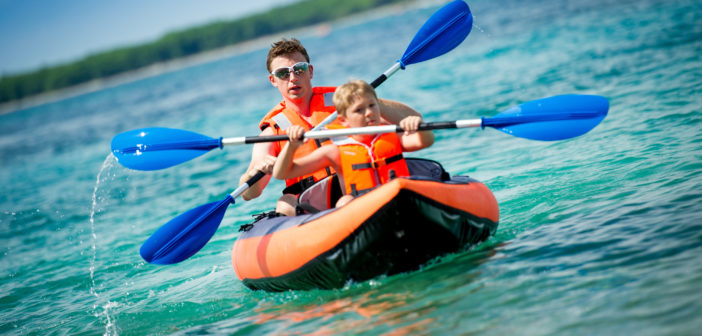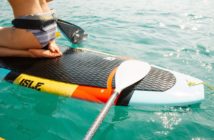In 2016 more than 15 million people in the United States went kayaking. Kayaking continues to grow in popularity as people flock to the thousands of rivers and lakes across the U.S.
If you’re looking to get out on the water and try kayaking, you’ll need to get the right equipment. One of the most important pieces of equipment you’ll need is a kayak paddle.
Selecting the right paddle is essential to making sure you enjoy your experience. So how do you make sure you’re choosing the right paddle?
We’ve got you covered. We’re here to tell you what you need to know when choosing a kayak paddle.
What to Look for When Choosing a Kayak Paddle
While kayak paddles may all seem the same to novice kayakers, there are key aspects of a paddle you must consider before selecting one.
Paddle Blade Shape
One of the more important aspects of a kayak paddle is the shape of the blades. Your paddling style will decide which paddle shape is best for you.
High angle paddle blades are shorter and broader and meant to be held more vertically during the paddle stroke. These blades allow you to take more powerful strokes and help your kayak move faster through the water.
However, the wider blade can be more tiring to use because it pushes more water with each stroke and requires more effort.
Low angle blades are meant to be held more horizontally as you paddle. These blades are longer and thinner than high angle paddles. This makes them good for the slower and consistent paddle strokes most recreation kayakers use.
These blades will allow you to move at a more relaxed pace and are less tiring to use than a high angle blade.
Kayak Paddle Material
Plastic paddles are a common choice for many kayakers. They are durable, relatively inexpensive and need little maintenance.
This makes plastic paddles ideal for beginners and recreational kayakers who are looking for an enjoyable day on the water.
Fiberglass paddles are stiff, lightweight, and durable which makes them more efficient than plastic paddles. As a result, fiberglass paddles are popular among recreational kayakers despite the fact they are somewhat more expensive than plastic paddles.
Some fiberglass paddles use a carbon fiber shaft which helps to further reduce the weight of the paddle while being less costly than a full carbon fiber paddle.
The most expensive paddles are made from carbon fiber. Carbon fiber provides high quality and is very lightweight.
These paddles are stiff and extremely durable making them the best kayak paddle for long trips where you’ll be paddling for hours or days.
Paddles made from aluminum are the most inexpensive option. While they are durable, they are heavy and can feel cold in your hands on chilly days.
Feathering
Feathering refers to the angle of the two blades that make up the paddle. A paddle that lays flat on the ground has unfeathered blades and both blades are at the same angle.
A feathered paddle will have different angle blades. This reduces the wind resistance of the blade as you paddle since the blade not in the water is angled to lower wind resistance.
Using a feathered paddle means you must rotate one hand as you paddle to turn the blade entering the water into position. This can increase the strain you’ll feel on your wrist.
For this reason, many kayakers may find unfeathered paddles easier and more comfortable to use.
Some paddles have removable blades which allow you to change the angle of the blades. This means you can go from a feathered paddle to an unfeathered paddle quickly and easily.
Bent Versus Straight Shaft Paddles
Most kayak paddles have a straight shaft. However, some paddles come with sections having a slight bend in them.
The purpose of the bent shaft is to keep your wrists in a neutral position through the stroke. This makes paddles with bent shafts the best kayak paddle for those who suffer from wrist pain.
Choosing the Right Kayak Paddle Length
Perhaps the most important decision you’ll make in buying a kayak paddle is which paddle length to select. If you don’t have a properly sized paddle, it could be inefficient and uncomfortable to use.
One key element in determining paddle size is your overall height. A quick and easy guide is to stand next to the paddle and extend your arm up.
The proper height paddle will allow you to reach up and curl your fingers over the end of the paddle.
However, if you want to be sure you’re getting the best fit, you’ll want to measure the length of your torso. This is because you’ll be in a seated position while using the paddle so overall height is a less reliable guide than torso length.
An easy way to measure your torso length is to site in a straight-backed chair and measure the distance between your nose and the seat.
Another factor in choosing the right size kayak paddle is the type of paddling you’ll be doing. If you’re looking for speed, a shorter paddle allows you to take shorter, faster strokes which can propel your kayak at a faster speed.
The Right Kayak Paddle Makes All the Difference
You have many choices when looking for the best kayak paddle for your needs. Selecting the right paddle is an important element in making sure you enjoy your time out on the water and can even help you avoid common paddling injuries.
For this reason, you’ll want to take your time and select the option best for you. Being able to try different paddle types on the water can be a big help in identifying which type works best for you.
Choosing a kayak paddle may seem daunting with so many factors to think about but understanding your paddle options will help you know what to look for.
Whether it’s figuring out the best wetsuits for kayaking or looking for kayaking guides, we’re here to help.
Contact us today to let us know what you’d like to know about kayaking.




